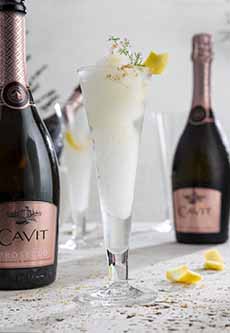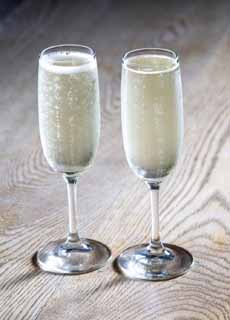TIP OF THE DAY: Frosecco, A Frozen Prosecco Cocktail
|
|
A toast to National Prosecco Day, August 13th (photo #2)! The Bellini cocktail, created in 1948 at Harry’s Bar in Venice, was made with Prosecco. Here’s the recipe for a Bellini, but our focus today is something new. Three years ago, the drink rage of the summer was the Frosé, a frozen rosé drink made by adding a scoop of sorbet to a glass of rosé (recipes below. Now, we propose a new frosty drink: Frosecco, a frozen Prosecco cocktail made with Italy’s famed sparkling wine (photo #1). It’s a blender drink created by Cavit Winery. Ingredients For 4-6 Drinks 1. POUR a bottle of Prosecco into a freezer-proof container and freeze overnight. 2. COMBINE the frozen Prosecco, lime juice, lemon juice, agave and ice in a blender, and pulse or blend to desired consistency. HERE’S MORE ABOUT CAVIT, which also makes Cabernet Sauvignon, Chardonnay, Merlot, Moscato, Pinot Grigio, Pinot Noir, Riesling, Rosé, Select Red Blend and Sweet Red Blend. Here’s a store locator. Here are more Prosecco cocktail recipes from Cavit. Prosecco, from the Veneto region of northeast Italy (photo #3), is the best-selling sparkling wine in the world by volume. The history of Prosecco is not well documented. Until recently, there were different theories about its origin. The name Prosecco is derived from the Italian village of Prosecco near Trieste, where the grape and the wine may have originated. Now it is believed that the first Prosecco was created in 1868 by Antonio Carpene, who subjected still white wine of the area to a second fermentation, which produced the bubbles. Today, Prosecco is controlled by DOC or DOCG†. Under these wine laws, Prosecco can be spumante (“sparkling wine”), frizzante (“semi-sparkling wine”), or tranquillo (“still wine”). The laws also specify which towns can produce Prosecco, typically because of the quality of their soil, which impacts the flavor of the wine. The flavor of Prosecco is crisp, often described as having notes of apricot, pear, white peach and/or yellow apple. |
|
|
It is light, fresh, comparatively simple—as opposed to the complexity of Champagne—and should be drunk young, preferably within three years of its vintage (the top bottles can aged for up to seven years). It is lower in alcohol than Champagne, typically 10.5%-11.5% A.B.V., and nice for a summer apéritif (photo #2) before dinner. *If you want a different sweetener, note that gave is twice as sweet as sugar or honey. Here’s conversion information. †DOCG and DOC are Italian quality classifications. DOCG is Denominazione di Origine Controllata e Garantita, Denomination of Controlled and Guaranteed Origin. DOC is Denominazione di Origine Controllata, Denomination of Controlled Origin.The labels are an assurance of the provenance and quality of the wines. DOCG is the higher category. The regulations for each delineate the production area, permitted grape varieties and production techniques. DOC Prosecco can be produced in nine provinces in the Veneto and Friuli Venezia Giulia regions. Prosecco Superiore DOCG is even more restricted.
|
||





